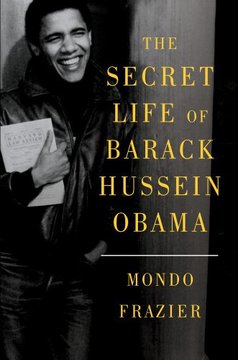
USS Kitty Hawk could be decommissioned in 2008
Carrier could be sent to India
Throwing a monkey wrench into Russian plans
Could India be getting a decommissioned US aircraft carrier?
What new rhetoric can we then be expected to hear from Russia?
If current rumors in India are true, the United States could end up providing India what its traditional Russian arms supplier has long promised to provide, but so far failed to deliver. In the process the United States could deliver a severe blow to Russia's defense industry, adding another item to the long list of grievances Russian officialdom has lodged against the United States.
During the Cold War, India was famously the largest and most powerful of the "non-aligned" nations that stayed out of the East v. West confrontation. At the same time, however, India enjoyed close relations with the then-Soviet Union that went beyond just the bonds of political convenience and trade ties between the two nations.
India has been a favorite customer of Russia and the USSR in the past.
Former Indian PM Indira Ghandi was one of Soviet Party Secretary Leonid Brezhnev's favorite foreign leaders, and he loved to make a show of that affection when she traveled to the USSR. Residents in sections of Moscow that straddle the main road leading from Vnukovo airport to the centre of the city can still recount how in those times they were dragooned by their local party officials to line the streets and wave Indian flags (if during the day) or flashlights (if at night) to greet Mrs. Ghandi's motorcade on official state visits..
India took advantage of their favored but non-allied nation status by purchasing from the USSR some of the most advanced weaponry available at the time. In the 1970s and 80s, India's fledgling defense industry benefited from Soviet specialists providing them with numerous current-day weapons platforms and the establishment of production lines to license-build Soviet hardware, such as the Mikoyan MiG-27s that were assembled at the Hindustan Aeronautics Ltd (HAL) plant in Nasik
When the USSR and the Soviet empire collapsed, it the weapons dealings between the countries only grew. Russia needed the money and India needed the weapons.
In fact, Russia has sold India some weapons that not even the Russian armed forces have received--all for the bucks which a newly-configured Russia needed badly.
By the 1990s, Moscow was selling India some of the most advanced weaponry in its arsenal, including the high-powered Sukhoi Su-30MKI, a specialized variant of the heavyweight fighter than was optimized for aerodynamic performance and upgraded with a new-generation radar set, the NIIP N011M Bars model, that not even the Russian Air Force has in service.
Four years ago, Russia and India signed a contract to provide the Indian Navy with their own aircraft carried, plus a version of the MiG-29 to use on the carrier. New Delhi had long sought the power projection an aircraft carrier gives in the India
On the face of it this seemed like the perfect deal for both sides. India was to be given an older-generation aircraft carrier, the Admiral Gorshkov, for free, but would have to pay $700 million for a refit of the vessel, plus they would have to purchase the MiG-29Ks and eight naval helicopters for another $800 million. India was also offered options to purchase an additional 30 MiG-29Ks and upgrades to Indian port facilities in order to dock and service the Gorshkov for a total of another $1.5 billion. But, the program has proven to be overly ambitious and has run into a number of snags that threaten to derail a decades-long symbiotic relationship.
The deal has run into problems and has given a major migraine to some on both sides.
But, for all of the success at MiG in making good on their promises to the Indians to build a new-generation carrier airplane--tailhook and all--the progress on the carrier has been abysmal.
When the Russian state arms export agency Rosoboronexport (ROE) made the carrier deal, the vessel was scheduled to be delivered to the Indian Navy in 2008. ROE must not have known what they were getting themselves into and as of last summer the bad news for the Indians could no longer be kept secret. As reported by Russian military analyst Aleksandr Golts, "the money [$1.5 billion] was allocated, but the work was never done."
Another Russian military commentator, Pavel Felgenhauer, stated the situation more bluntly in one of his columns on the carrier entitled "Sold: The $1.5 Billion Lemon."
The Gorshkov is roughly have the size of a U.S. carrier and was originally designed with a flight deck large enough only for a vertical take-off and short landing (VSTOL) airplane like the famous Harrier jump jets operated by the U.S. Marine Corps and the Royal Navy. Russia's Cold War-era answer to the Harrier was the Yakovlev Yak-38, a lackluster performer and an airplane so dangerous that was referred to as "the widowmaker."
Now the USA has stepped into the breech and started doing some old-fashioned Yankee horse-trading.
Enter the United States. According to numerous sources inside India, when U.S. Defense Secretary Robert Gates visits New Delhi late in February (provided his Tuesday Potomac Primary Day broken shoulder does not alter his itinerary) he will be carrying a signed letter from U.S. President George W. Bush offering a better deal for India than the one they have been struggling to get out of Moscow for four years now. The Indian Navy will reportedly be offered the soon-to-be decommissioned USS Kitty Hawk (CV 63) aircraft carrier for free--provided the Indian Navy will agree to purchase 65 of the newest model Boeing F/A-18E/F Super Hornets to be operated off of it.
If true--and if New Delhi accepts--this can do more than just sink the Russian carrier deal and the MiG-29K contract. The Indian Air Force (IAF) are deep in the throes of a tender to purchase almost 200 new fighter aircraft, with Boeing and RSK-MiG both in the field of six contenders. An order of 200 fighter airplanes is unheard of--larger than any such export sale in more than 20 years. In an era where sales of 12, 20, or 40 fighters are more common, this is the PowerBall Lotto of export competitions.
The Russians won't be happy, the Indians and Boeing are going to dancing in their offices, and the USA looks like it will kill 3 or 4 birds with one stone.
But there are sure to be voices raised in protest in all three countries.
1- In Russia at the lost business and prestige.
2- In India, by those who may be concerned at antagonizing Russia.
3- In the US, by those who can't just see the Kitty Hawk flying the Indian--or any other country's--flag.
You can be sure that the Kitty Hawk flying the Indian flag will be a strange sight for the thousands of US sailors who've served aboard her down through the years.
Will the deal go through? Will the USS Kitty Hawk be patrolling the Indian Ocean as India's first aircraft carrier? Will the Russian's denounce the imperialist Americans again?
Interesting, indeed.
by Mondoreb
For complete analysis of the possible effects of this deal, visit the Weekly Standard online.
hat tip: AR-15 forum
image: icci.navy
Source:
[Reuben F. Johnson in THE WEEKLY STANDARD online.]
Death by 1000 Papercuts Front Page.






























No comments:
Post a Comment
Leave your name/nic.
We've changed the comments section to allow non-registered users to comment.
We'll continue like that until it's being abused.
We reserve the right to delete all abusive or otherwise inappropriate comments.